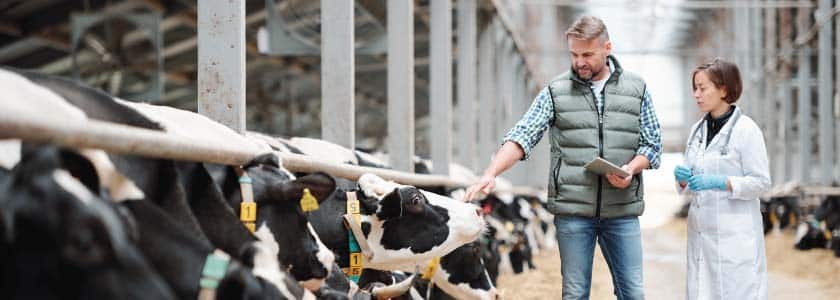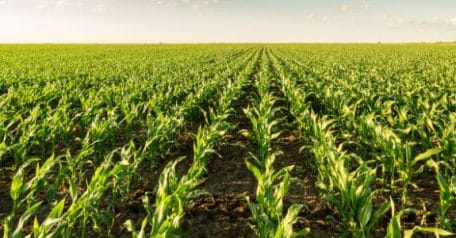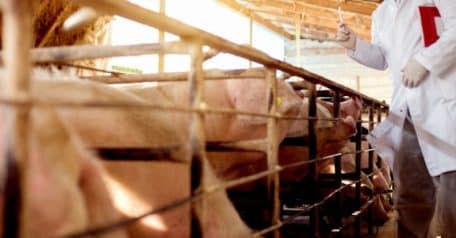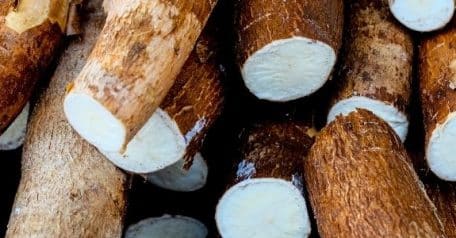Humans have been breeding plants and animals to suit their needs for millennia. The domestication of food sources revolutionized human societies and lessened the need to hunt or forage. It allowed humans to form permanent settlements, which dramatically changed our societies. The evolution of how we grow food is accelerating today as scientists use gene editing tools to introduce new traits into organisms faster than selective breeding has allowed in the past. The process isn’t without controversy, with some strongly opposed to any genetic manipulation of food sources. How we decide to use these new tools will have a widespread impact on our ability to feed the growing human population in a changing climate.
Selective breeding
Have you ever wondered how much milk a dairy cow produces? Turns out it’s about 10,000 liters a year. Averaged over the year, that’s nearly 30 liters a day, and that doesn’t even count the milk the cow feeds to her calf. But why does the cow make so much more milk than her calf needs? The answer is that humans have spent decades breeding dairy cows to make larger volumes of milk so that more milk can be produced using fewer cows.
Artificial selection of cows
Farmers take dairy cows that have produced lots of milk and breed them with bulls whose mothers or siblings also produced lots of milk. Over generations, they slowly select for cows that produce more milk, a process called artificial selection. This is the slow and steady process that humans have been using for millennia to change living things in the world around us to better suit our needs. It could be anything from the transformation of wolves into domestic dogs to growing sweeter corn with larger kernels. Artificial selection through selective breeding has been applied to almost every single food item for purchase at your grocery store.
One of the main aims of this process is to make it easier to produce larger quantities of higher-quality food more quickly. Crops can be made disease- and drought-resistant, animals made to grow to full size faster, and the nutritional content of foods can be improved. These changes make food producers more efficient and profitable, but they also allow them to produce enough food to feed the growing human population. Another aim of selective breeding is to make foods that are more appealing to consumers. Sweeter fruits with fewer seeds and beef with better fat marbling are traits that largely cater to consumer tastes and don’t necessarily make farms more productive.
Gene editing and transgenic organisms
These days, you’re more likely to hear news about genetically modified organisms (GMOs) or transgenic foods made using methods like CRISPR than selective breeding. These new methods allow scientists to change specific genes in the genetic code of an organisms or even introduce a new gene altogether. If a scientist understands the genetic basis for a particular trait that they want to see in the organism they’re working with, they can use these tools to introduce it. Since these tools don’t require many generations of selective breeding, they can rapidly create new breeds of food crops and animals.
AquaBounty Salmon
For example, AquaBounty was able to create a genetically modified salmon that grows much faster and larger than wild salmon in a matter of years, a change that likely would have taken decades or even been impossible to introduce using selective breeding.
There are many who are concerned about the impact these tools will have on our food chain and our health. As with any new technology, there are many unknowns. How can we safely use a new tool when we don’t fully understand everything about it? While the gene editing tool CRISPR is amazingly precise, it can still introduce off-target genetic edits that can be difficult to detect. These CRISPR off-target edits are often harmless but it’s up to scientists to demonstrate that fully before consumers will widely trust these methods. While progress is being made to make CRISPR more precise, these concerns will persist for some time.
The public also has ethical concerns about directly manipulating the genomes of living organisms. Some believe that nature should be left to develop new traits through more natural processes. Who are we to modify naturally occurring organisms? The reality is the gene modification and editing are happening all the time in nature. Researchers have found bacterial gene sequences in the genetic code of some sweet potatoes, indicating genes from the bacteria were introduced into the sweet potato genome through a natural process. Scientists today simply aim to leverage those naturally occurring process to solve challenges producing the food humanity needs.
The future of food
Our world is changing rapidly. The number of humans on earth has increased from 5.3 billion in 1990 to nearly 8 billion today. More and more land is required to produce food, and this is increasing carbon emissions, further fueling climate change. Gene editing presents a solution to this problem, allowing us to produce more food and do so more efficiently, all while using less land. The improved yields of these crops are likely to be a major part of the solutions to climate change and a growing human population around the world.
As our global food needs continue to change and governments clarify what is and isn’t allowed in terms of genetic engineering, consumers are likely to see more and more gene edited foods in their local grocery stores. Scientists will continue to build a body of evidence showing how safe these foods are, and consumers should take comfort in knowing that what they are eating today is simply the next step in thousands of years of humans manipulating our food sources to better suit our needs.

























